Why Does Concrete Get Hot?
Important Point
The sun and curing are the two main causes of concrete heating up. Sand, cement, and aggregate are the components of concrete.
The chemical reaction that results from mixing these three chemicals with water dries and hardens the concrete while also generating heat.
Healing takes place throughout this procedure, which typically lasts 28 days. As concrete dries, it gets stronger and emits heat. The concrete is chilled after curing. As we all know the sun is the 2nd most frequent cause of excess heat for concrete. Concrete is good at absorbing and retaining energy, just like all masonry products.
The heat from the sun can be effectively absorbed and retained by concrete. They frequently mention heated areas like patios, sidewalks, and concrete around swimming pools in the summer when we inquire as to why concrete heats up.
You’ll notice the change right away if you’ve ever stepped from a wood stove or deck onto a concrete patio. Concrete can get rather warm. This can occur a few hours after dusk. What gives, though?
First, we’ll talk about why concrete warms up in the sun and examine the curing procedure in more detail.
Also Read: Luminous Flux Unit
Sunlight:
The sun is the most frequent cause of heated concrete. Although concrete only needs to cure for 28 days, it may be heated year-round by the sun. The primary heat source is sunlight.
Concrete can hold heat quite effectively. This indicates that it can heat up more slowly and at a higher temperature than the majority of other materials.
Concrete can reach 135 °F when exposed to direct sunshine in the summer, even though concrete in the shade typically only reaches 70 °F. An instrument known as an infrared thermometer is used by builders to verify this.
A very high heat capacity exists in the concrete. This is usually caused by 2 separate things. Concrete’s surface is quite dull and does not reflect much light. Instead, the sun’s rays were absorbed by the concrete.
In essence, the composition of concrete makes it good for storing heat. It is a type of energy that the sun emits. These two elements combine to explain why concrete is so effective at absorbing and holding onto heat, as well as why it feels warm in the summer.
After cooling, concrete is eventually discharged into the atmosphere, raising the ambient air’s temperature. As a result, the city is a little bit warmer at night than the countryside.
The metropolis is gradually warmed by the heat that the concrete absorbs during the day. This is also a factor in the winter because individuals are more aware of the effect when it’s cold outside.
Concrete Gets Very Hot:
Concrete as we all know not only retains heat for a long time, but also it heats up quicker than most other known materials. Plants that are tested in direct sunlight all day rarely reach temperatures higher than 80°F. Concrete can heat up to 175°F, while wood can reach 90°F and composites 100°F.
Most individuals find it uncomfortable to walk barefoot in the heat. Ever witness an egg being fried on hot concrete? States like Arizona and Nevada allow it.
Except for shade, there isn’t much you can do to keep concrete from heating up in the summer. All you can truly do is try to keep concrete from absorbing sunlight. There are no sealants or additives to stop the concrete from heating up.
However, this only works if the water’s surface is wet.
Climate and Topography:
The pavement is heated by more than simply the sun’s beams. Concrete temperatures are also influenced by Earth and air temperatures.
The concrete can still be warm in the summer even if it’s gloomy outside. This is so because concrete absorbs heat from the Earth and the air in addition to sunlight. Because of how well it absorbs energy, concrete is rarely a few degrees warmer or colder than the typical ambient temperature.
For instance, the concrete will be the hottest if placed adjacent to wood, soil, fire, and tile. In winter, concrete will be warmer than other materials, while in summer, it will be redder.
The concrete is permeable to the earth’s temperature. Concrete can therefore become too hot even in the shade in desert regions like Arizona. No matter what you do, concrete will heat up when hot air is mixed with hot air.
Also Read: Concrete Mix Ratio | What Is Concrete Mix Ratio | Types of Concrete Mix Ratio
Benefits of Hot Concrete
Concrete heated by the sun can be advantageous. Many builders are employing concrete’s high energy capacity to heat the ground, despite the fact that many people complain that concrete patios are too hot to walk on in the summer.
Passive Houses are exceptionally energy-efficient constructions. The house is heated using huge insulated windows and concrete walls and flooring.
The windows allowed daylight to penetrate the concrete during the day. The concrete that warms the house emerges at night. The heat stays within the house because too Passive House’s extremely high insulation levels and airtight seals.
Artificially Heating Concrete
The heated floor is ideal for both indoor and outdoor use because of how well concrete absorbs and retains heat. A fantastic technique to heat your house is using floor lights. Inside the concrete slab are pipes carrying hot water or electric coils.
Concrete heating elements are heated if required. The floor is heated uniformly throughout the day by this energy, which emits heat into the atmosphere.
The warmth is constant and quite comforting. Turn off the heat once the concrete reaches the proper temperature to prevent the need for continuous hot water or power for hours.
It is possible to use this kind of radiant floor heating in places like patios, decks, driveways, and sidewalks. Snow and ice may be easily melted with exposed concrete slab heating, just as inside.
Although walking on hot concrete might occasionally be uncomfortable, it also offers several advantages, unlike what many people believe.
Curing:
The concrete goes through two procedures once it is laid. The initial dry Water evaporation causes the concrete to harden and become stronger.
The concrete isn’t entirely dry, though. Masons in some hot regions will moisten the concrete’s surface as it cures since curing requires a certain amount of water. Over time, water and cement chemically interact and combine, strengthening the concrete.
Heat is produced by the healing process outside of the construction business. Curing is a crucial step in the construction of concrete structures. The concrete won’t perform to its full potential otherwise.
Psi per square inch is the unit used to measure concrete strength. When the label on a bag of Quikrete concrete states 3500, it actually implies 3500 psi.
The more concrete is stronger the higher the number. After the entire quantity has healed, this occurs. potential power, not ultimate power. Only 1500 psi of concrete may be placed in 10 days. It reaches to 3500 psi after proper curing of 28 days.
The heat created during curing is typically not a concern in small building projects. but for significant building initiatives, such laying the groundwork for bridges or dams. To control the temperature, concrete must be poured in a specific manner.
Also Read: How to Cover Concrete Walls in a Basement
How Much Heat Is Generated by Curing Concrete?
Concrete should ideally be mixed and maintained indoors between 50 and 90 degrees. On a chilly day, a hot blanket must be used to warm the concrete. It might be required to moisten the concrete surface to keep it cool on a hot day.
So as the sun sets, it ought to be warm. Pour concrete in the middle of the day and keep it as cool as you can in the summer after nightfall.
Why Curing Produces Heat?
Contrary to popular belief, concrete does not necessarily dry out over time. In reality, it experiences a chemical event that modifies and solidifies water molecules. Concrete is dry as a result, but this is not due to evaporation.
This chemical reaction produces a heated result. It will continue to be created for the duration of the reaction. Heat is not a major issue if there are many concrete structures, such as walkways, balconies, staircases, and main stairs.
Concrete is kept cold in the summer and heated in the winter by builders. However, heat management calls for certain extra precautions when it comes to large-scale industrial buildings, including concrete dams and substantial foundations. The structure may crack if the temperature of the concrete is too high.
Due to internal expansion brought on by heat, concrete cannot be contained without cracking. The difference in temperature between the inside and exterior of big constructions made of concrete should not be greater than 36°F.
Why Concrete’s Curing Temperature Matters?
The importance of our concrete’s curing temperature can be boiled down to one word: strength. The final psi is decreased if the concrete is excessively hot because it can harden and strengthen prematurely.
Concrete may not set properly if it is left outside in the cold, and it also won’t harden; The strongest concrete is created when curing temperatures range from 50 to 90 degrees Celsius. Concrete requires a lengthy period of slow curing. Concrete becomes weaker as it is crushed or sheared.
The heat generated by hydration can also change the makeup of the concrete in addition to using external techniques like soaking when the concrete is too hot or insulating when it is too cold.
Therefore, depending on the scope of the project and the weather, the concrete composition also contributes to a powerful final result.
The formula is usually similar when you order concrete by truckload or use pre-mixed bags like Quikrete. It is up to you to make the necessary adjustments if you mix the concrete on-site yourself.
Why Hot Weather Is a Problem?
Hot weather hastens the evaporation of water, which is problematic for concrete curing. The concrete dries out too quickly as a result, which hinders the cure.
The chemical process that cures and fortifies concrete depends heavily on water. Concrete will deteriorate if there isn’t enough water for the cement to react with.
Masons address this issue by pouring concrete in colder temperatures and moistening it with water afterward. Additionally, it is covered in concrete, which aids in the retention of water evaporating off the concrete surface.
Due to a phenomenon known as thermal shock, a fast change in temperature can cause concrete to crack. It’s crucial to keep an eye on water evaporation caused by temperature and sunlight when dealing with concrete. Lack of water prevents cement from setting, resulting in weak concrete and low psi.
Also Read: M30 Grade of Concrete Mix Design Procedure with OPC 53 Cement
Why Cold Weather Is a Problem?
Concrete pouring and curing in extreme cold and heat is equally hazardous. The chemical reaction must be heated sufficiently for it to happen as the concrete cures.
This means that because water is one of the primary ingredients, the curing process will essentially freeze when the outside temperature is too low. Normally, this is at or around 50°F.
Pouring the concrete at the proper ambient temperature is crucial. The curing process suffers from extremes of temperature, which can damage the concrete.
A concrete heating blanket can be used to maintain the concrete at the ideal temperature when there is no other choice and you need to fix the temperature. When pouring concrete in the cold, be sure you have it on hand.
Also Read: What Is Cover in Concrete | Clear Cover in Beams, Slab, Column, Footing
Types of Cement:
One kind of cement. The majority of concrete is made with this conventional cement mixture. No specific substances are required to lessen the quantity of heat that is emitted while cooking.
- Unless a different curing method is desired, Type 1 cement is typically used in construction projects. Second kind of cement. This mixture is intended to generate less heat over a longer duration. It is frequently employed in substantial buildings like massive walls and foundations.
- Third kind of cement. cement Type 3 doesn’t generate much heat during treatment. Usually, it is employed in sizable initiatives like dam construction.
- The heat produced during curing may be sufficient to crack entire concrete structures, such as gravity dams. Indoor heat management is crucial in these big projects.
Why Does Concrete Get Hot?
The heat produced by concrete during curing is called heat of hydration. This exothermic reaction occurs when water and cement react. The amount of heat produced during the reaction is largely related to the composition and fineness of the cement.
How Hot Can Concrete Get Before Cracking?
Concrete temperatures which exceed air or ground temperatures by more than 35ºF can cause thermal cracking.
How Much Heat Does Concrete Generate?
How Much Heat is Generated? As a general rule, the Portland Cement Association estimates that for every 100 pounds of cement, the concrete gains anywhere from 10 to 15 degrees Fahrenheit in temperature.
Does Concrete Absorb Cold?
Concrete surfaces will retain the coolness they absorbed during the night, and release it during the day. The other benefit of high thermal mass material is that it’s a sustainable and environmentally friendly product, making your building more energy-efficient and saving you money on your heating and cooling bills.
How Long Does Concrete Hold Heat?
It’s a little known fact outside the construction industry that the curing process generates heat. This happens because of the chemical reaction between cement and water which is called hydration. Heat is generated during these reactions as the concrete continues to cure for around 28 days.
Concrete Exothermic Reaction
Concrete curing, the hydration of the cement and the reaction between the cement and the water, is an exothermic reaction. Exothermic means it’s a reaction that gives off heat. This is very advantageous to pouring concrete in the cold.
Concrete Curing Heat
Ideally, concrete should be poured and cured at an internal temperature of 50 to 90 degrees Fahrenheit.
Curing Temperature of Concrete in Celsius
At a minimum, concrete should be cured at temperatures above 7.2 degrees Celsius (45 degrees Fahrenheit). Below this temperature, concrete’s chemical reaction completely stops – which can result in costly delays and rework.
Curing Temperature of Polymer
The crosslinking of epoxy polymer is an irreversible process. Tg of polymer 4 is stabilized at 60 °C for a cure at 40 °C even if it is kept at a lower temperature (20 °C) in the following days.
Best Temperature for Concrete to Cure
Upon pouring and throughout curing, the concrete must be kept at 40 degrees if more than 72 inches thick, 45 degrees if 36 to 72 inches thick, 50 degrees if 12 to 36 inches thick, or 55 degrees if less than 12 inches.
Cold Weather Concrete Curing
After the concrete has been poured, it needs to be kept at the correct temperature to cure. Most importantly, it needs to be kept from freezing. Ideal temperatures (50-60°F) should be maintained for about 48 hours for the concrete to reach optimal strength as it sets.
Curing Temperature of Concrete as Per Is Code
Effects of Hot Weather on the Body
Rapid rises in heat gain due to exposure to hotter than average conditions compromises the body’s ability to regulate temperature and can result in a cascade of illnesses, including heat cramps, heat exhaustion, heatstroke, and hyperthermia.
Effects of Heat Waves on Humans
Exposure to heatwaves can cause edema, syncope, cramping, heat exhaustion and the feared heat stroke, that can lead to death. In addition, extreme heat can cause severe dehydration, stroke and contribute to the formation of clots.
Are Heat Waves Caused by Climate Change?
Why Are Heat Waves Dangerous?
Heat can cause severe dehydration, acute cerebrovascular accidents and contribute to thrombogenesis (blood clots). People with chronic diseases that take daily medications have a greater risk of complications and death during a heatwave, as do older people and children.
How Does Climate Change Cause Heat Waves?
A warming climate can contribute to the intensity of heat waves by increasing the chances of very hot days and nights. Climate warming also increases evaporation on land, which can worsen drought and create conditions more prone to wildfire and a longer wildfire season.
Effects of Cold Weather on the Human Body
Prolonged exposure to cold will eventually use up your body’s stored energy. The result is hypothermia, or abnormally low body temperature. A body temperature that is too low affects the brain, making the victim unable to think clearly or move well.
Dangers of Cold Weather
The most common cold-related problems are hypothermia and frostbite. When exposed to cold temperatures, your body begins to lose heat faster than it can be produced. Prolonged exposure to cold will eventually use up your body’s stored energy. The result is hypothermia, or abnormally low body temper- ature.
Concrete Curing Temperature
Upon pouring and throughout curing, the concrete must be kept at 40 degrees if more than 72 inches thick, 45 degrees if 36 to 72 inches thick, 50 degrees if 12 to 36 inches thick, or 55 degrees if less than 12 inches.
Curing Temperature for Concrete
In general, the curing temperature for concrete is recommended to be within a range of 10°C to 35°C (50°F to 95°F). This range provides favorable conditions for the hydration reactions to occur and promotes the development of concrete strength. However, it’s important to note that the specific temperature requirements may vary based on project specifications and regional guidelines.
Hot Mixing Concrete
A hot-mixed lime mortar is one based on three components: quicklime, water and an aggregate such as sand. In a conventional mix, aggregate is mixed with lime which has previously been slaked. In this case, quicklime is mixed with the aggregate and then ‘slaked’ with water. The process generates heat, hence the terms.
What Makes Concrete Harden
Cement hardens when it comes into contact with water. This hardening is a process of crystallization. Crystals form (after a certain length of time which is known as the initial set time) and interlock with each other. Concrete is completely fluid before the cement sets, then progressively hardens.
What Temperature Is Too Hot to Pour Concrete
As a rule of thumb, 90 degrees Fahrenheit is the cut-off point. If it’s over 90 degrees, plan to pour another day. During summer, pour as early in the morning as possible. This tends to be the coolest part of the day and will therefore offer the best chance for moisture retention as the concrete begins to cure.
Concrete Curing in Hot Weather
Warm temperatures cause cement to set faster, and the faster cement sets, the faster it begins to cure. At 80 degrees, concrete usually sets in about four hours. At 90 degrees, you can expect it to set in 2.5 hours, and at 100 degrees, your concrete will set in roughly an hour and a half.
Pouring Concrete in Hot Weather
In addition to the potential for shrinkage cracks, hot weather will tend to cause concrete to lose slump (workability) and set much more quickly. Concrete will typically set in about 4 hours in 80o F temperatures, a 10o F increase in ambient temperature will reduce the set time to about 2.5 hours.
Can You Pour Concrete in 100 Degree Weather
Pouring concrete in extremely hot weather, such as 100 degrees Fahrenheit (38 degrees Celsius), can present challenges and risks that need to be addressed to ensure a successful outcome. Here are some important considerations:
- Hydration and Setting: High temperatures can accelerate the hydration process of concrete, causing it to set more quickly. This can lead to challenges in workability, placing, and finishing the concrete before it becomes too stiff. Rapid setting can also increase the risk of shrinkage cracks and reduce overall strength development.
- Evaporation and Moisture Loss: Hot weather increases the rate of evaporation, leading to rapid moisture loss from the concrete surface. This can result in premature drying and potential cracking. It is essential to prevent excessive moisture evaporation by using appropriate curing methods, such as covering the concrete with wet burlap, using curing compounds, or applying plastic sheets.
- Temperature Control: Measures should be taken to control the concrete’s temperature during transportation, placement, and curing. This can include using chilled water in the mixture, shading the work area, and cooling the aggregates and equipment before use. The use of ice or liquid nitrogen can also help lower the concrete temperature, but this requires careful consideration of the mix design and potential effects on concrete properties.
- Time of Placement: It is advisable to pour concrete during the cooler parts of the day, such as early morning or late evening, to minimize the impact of high temperatures. This allows for better workability and more manageable curing conditions.
- Adequate Planning and Preparation: Adequate planning and coordination are crucial when pouring concrete in hot weather. This includes having enough manpower to complete the work promptly, ensuring all necessary equipment and materials are available, and having a well-defined plan for placing, finishing, and curing the concrete.
- Consultation and Expert Advice: It is highly recommended to consult with a qualified engineer or concrete professional experienced in hot weather concreting. They can provide specific recommendations based on the project requirements, local conditions, and the concrete mix design.
Does Concrete Absorb Heat
A very modern and efficient type of flooring is concrete. It has the ability to absorb heat from direct sunlight, store the heat and release it slowly. The ability of concrete to absorb and store heat energy is called “thermal mass”.
How Hot Does Concrete Get in the Sun
In direct summer sun a dark colored concrete surface can reach in excess of 130-140 degrees F while the air temperature is in the 90s.
How Hot Does Concrete Get When Curing
It’s advised that concrete be cured at a moderate temperature between 50 °F – 90 °F. In a perfect world, the temperature of fresh concrete should be above 50 °F, but cured and maintained at 50 °F.
How Hot Is Concrete on a 90 Degree Day
In addition to storing heat for long periods of time, concrete also gets hotter than most other materials. When builders test grass that’s in direct sunlight all day, it rarely gets over 80°F. Wood can reach 90°F, composite decking 100°F, but concrete can get as hot as 175°F.
What Temperature Does Concrete Melt
The melting point of traditional concrete is around 1,630 degrees Celsius..
at What Temperature Does Concrete Melt
The melting point of traditional cement is around 1,550 degrees Celsius. Aggregates: given that sand is one of the most commonly used aggregates in concrete, and silica is one of the most dominant elements of sand, we will use the melting point of silica as a guide, which is around 1,710 degrees Celsius.
Given the above, we can take the melting point of concrete to be somewhere in the middle of the above figures, so around 1,630 degrees Celsius.
When Is It Too Hot to Pour Concrete
Nonetheless, ASTM C 1064-86 set a maximum limit between 26.7°C and 35°C. This can be modified in accordance with project specifications. For temperatures greater than 35°C, the use of ice-cold water is recommended to prevent formation of cracks at early stages.
Like this post? Share it with your friends!
Suggested Read –
- Gravity Dams
- What Is a Buttress
- Workability Concrete
- Heartwood Vs Sapwood | What Is Sapwood | What Is Heartwood
- What Is Carpet Area | What Is Built-Up Area | What Is Super Built-Up Area | What Is REAR
- What Is Gypsum Plaster | 15 Advantage of Gypsum Plaster | Disadvantage of Gypsum Plaster
- What Is Dampness | Requirements of an Ideal Material for Damp-Proofing | Materials Used for Damp-Proofing
- Joints of Stone Masonry | Type of Joints of Stone Masonry | General Principles Which Are Used in the Construction of Stone Masonry
Originally posted 2023-06-06 17:41:01.


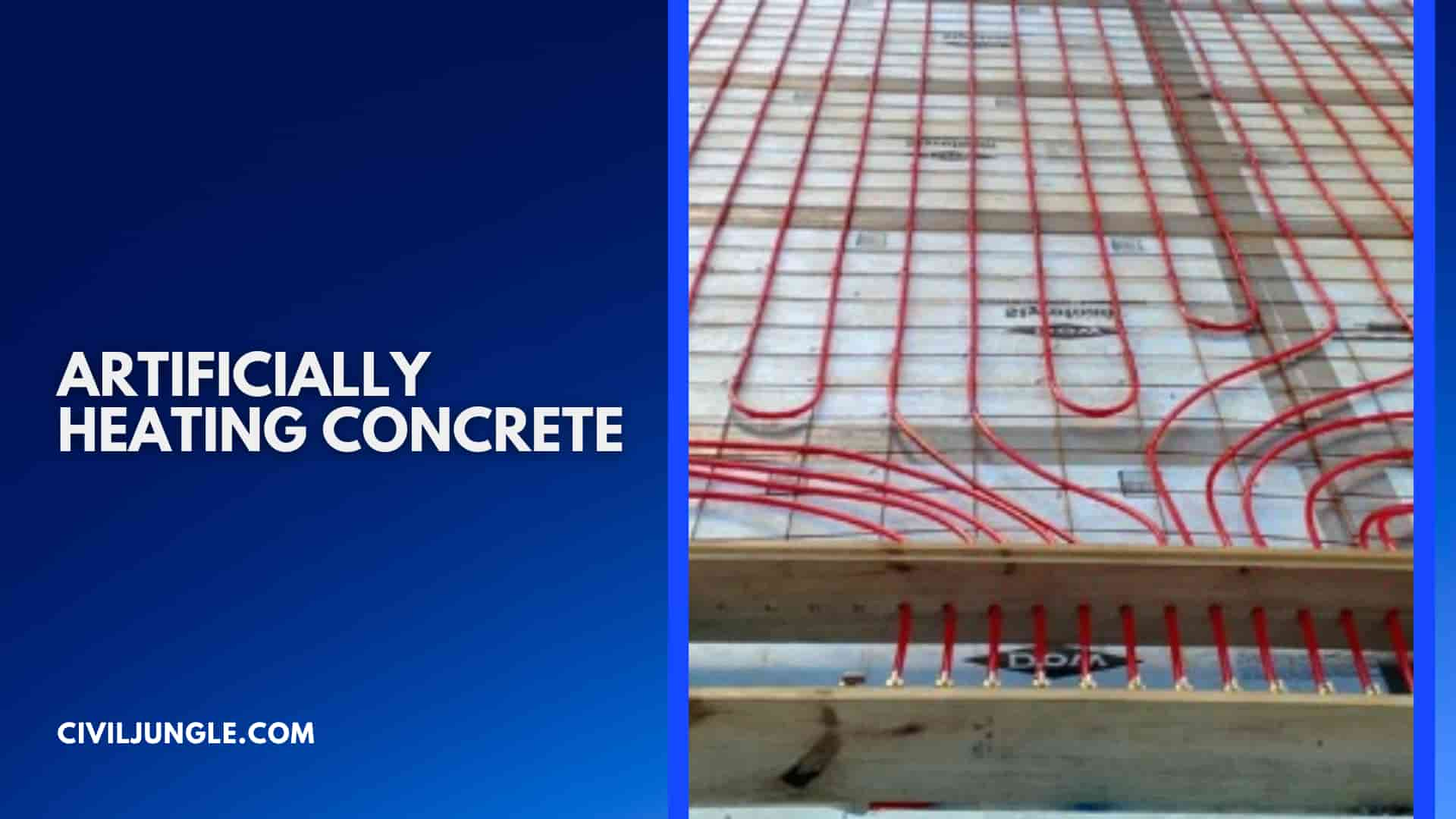
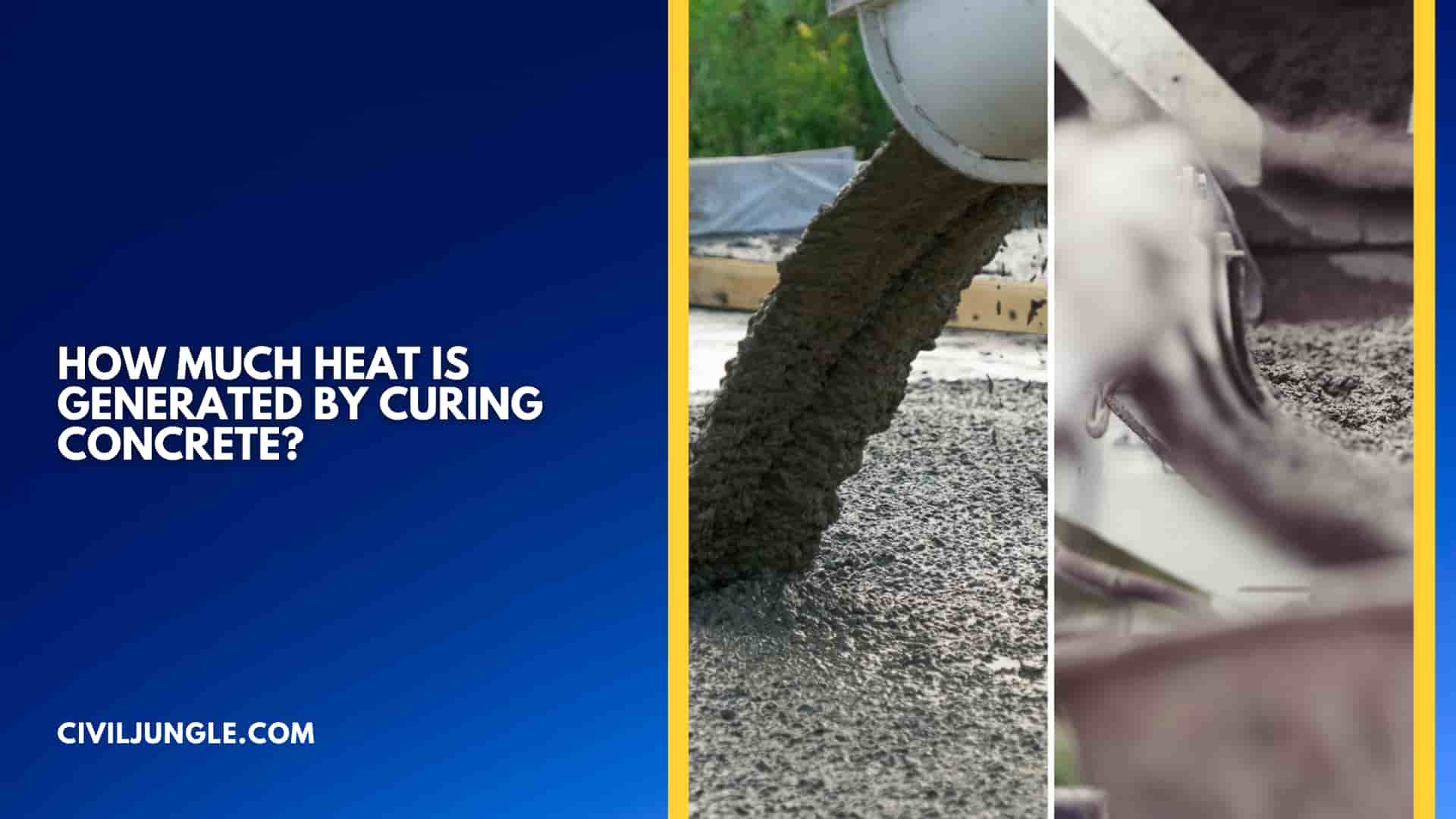
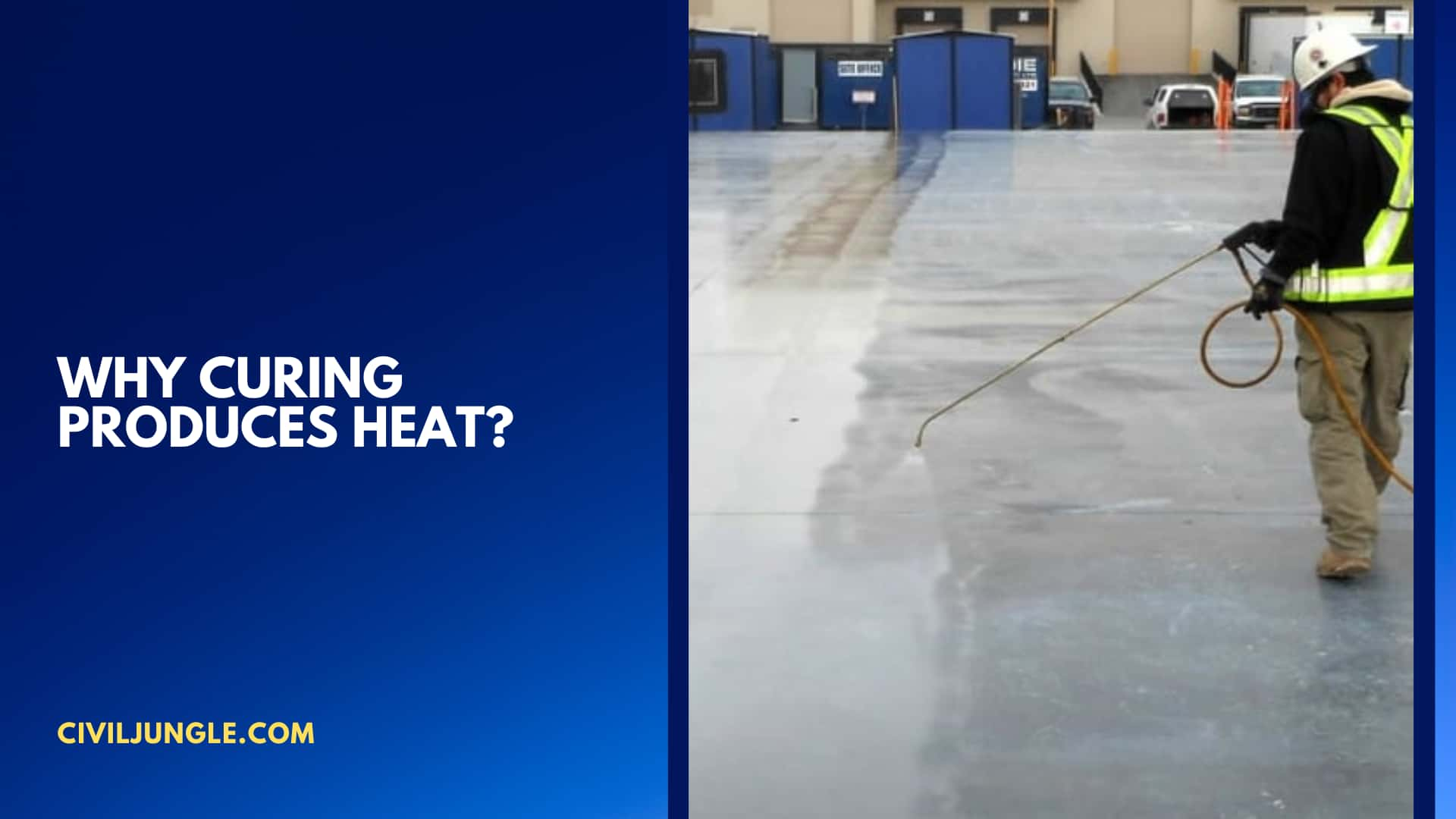
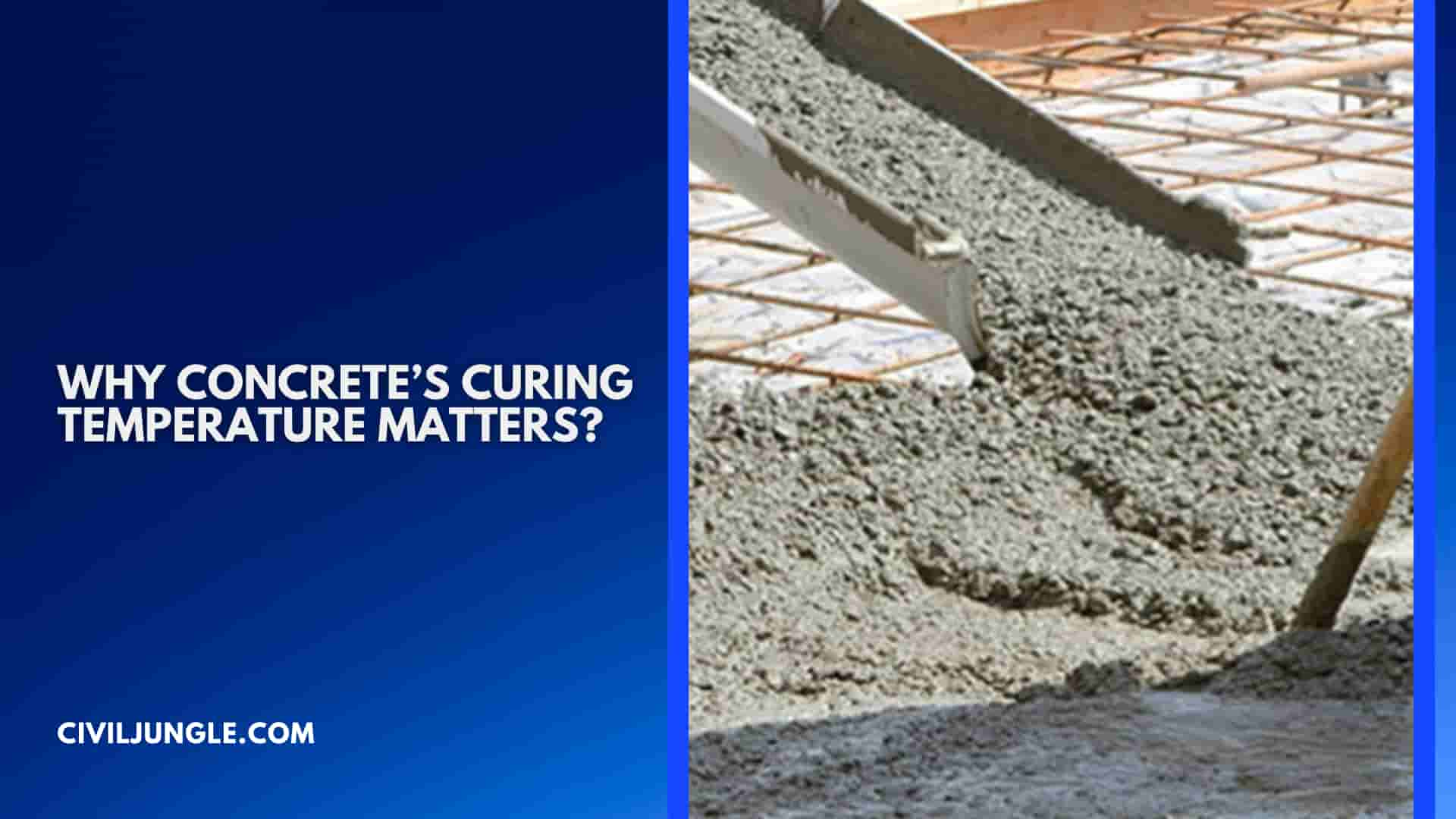


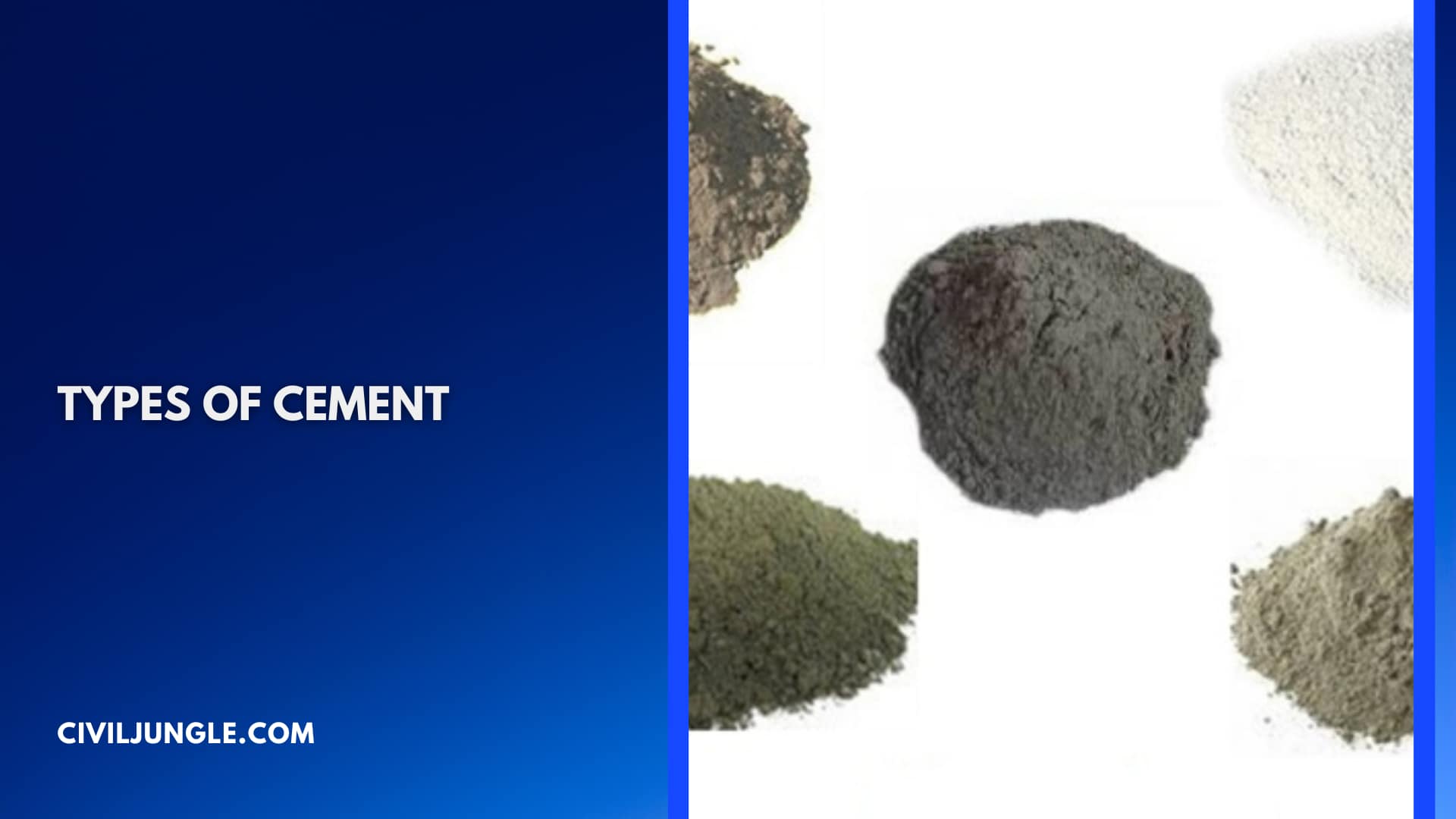

Leave a Reply